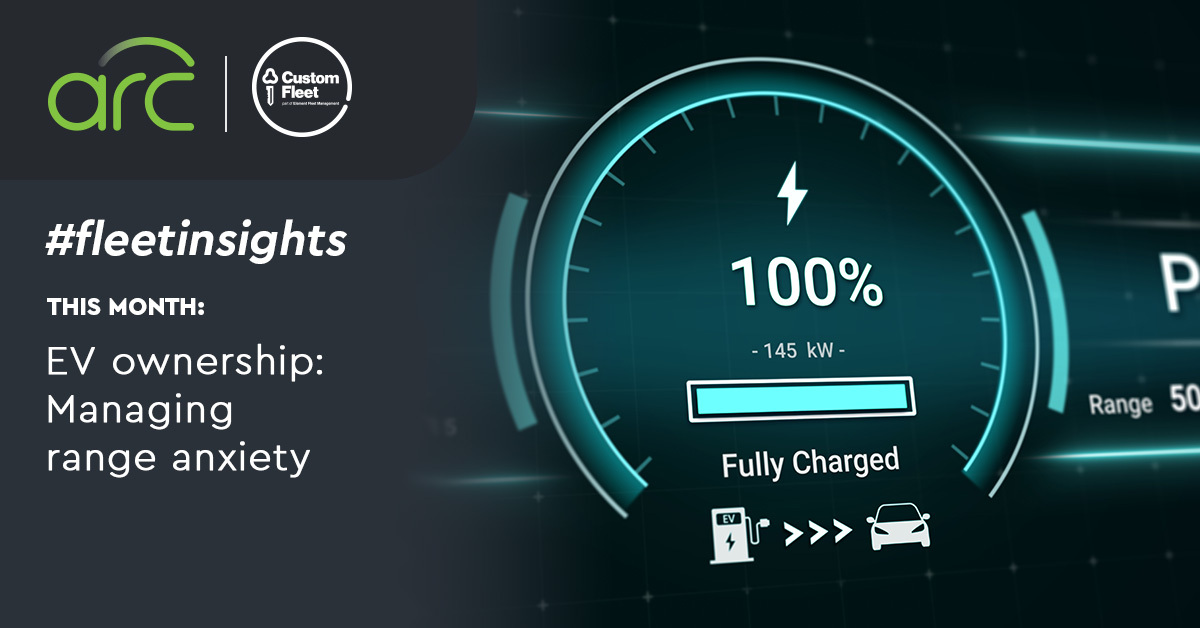24 January 2024
EV ownership: Managing range anxiety
One of the most common concerns about Electric Vehicles (EVs) is range. How far will you be able to drive before you need to recharge your battery? Will you be able to find charging stations on your drive?

This is known as range anxiety – the fear of running out of charge before reaching your destination.
With advancements in technology and infrastructure, range anxiety is fast becoming a thing of the past.
Keep in mind that the average daily distance travelled by the Australian motorist is 43km.
Newer EVs typically have a range of 400km or more on a single charge, more than enough for the majority of daily driving.
If you're planning a longer trip, here are our top driving tips for EVs to alleviate range anxiety.
Route planning
This is the most important way to prepare before a long trip.
Use the internet to search for charging stations along your route as well as who they’re operated by.
Make sure that you’ve signed up with the operator (usually via their mobile app) and you have your credit card attached to your account.
If you have a fleet car, your fleet operator may have issued you an EV charging fob for a specific network.
Each network operator’s mobile app will display the locations of their chargers. At the time of writing, Chargefox, EVIE and Tesla operate the largest public charging networks in Australia.
Some Tesla chargers can also be used by non-Tesla vehicles.
Strategies to maximise your EV range
EV drivers and fleet managers also can apply several strategies to optimise EV Range
- Cabin pre-conditioning – some EV models have a cabin preconditioning feature. This heats or cools your vehicle's cabin while it's plugged in, saving battery power for driving. Pre-conditioning before driving can improve range, especially in extreme weather.
- Regular EV maintenance – factors like tyre pressure and alignment are important and can impact power consumption and battery range.
- Driver training – instructing drivers on energy-efficient driving habits like smooth acceleration and deceleration, maintaining constant speeds, and avoiding unnecessary idling can result in substantial energy savings.
- Regenerative braking – Regenerative braking systems are an innovative new feature in EVs that transform the understanding of energy efficiency. “Regenerative brakes use electric motors rather than a traditional friction braking system to slow down and stop a car.” Source: How regenerative brakes work
This optimises energy usage and extends the vehicle’s range, improving battery charge efficiency. As you slow down or stop your EV, the regenerative braking system is activated.
Unlike traditional braking that wastes energy as heat, regenerative braking can recapture energy and convert it into electricity to recharge the vehicle's battery.
Do extreme temperatures impact EV performance?
Fortunately, in Australia and New Zealand we’re not exposed to extremely low temperatures. But if you’re planning to take your EV to the snow, it’s good to know that some EVs actually do better on snowy and icy roads than petrol-powered cars because they have better stability in slippery conditions.
EVs also have a lower centre of gravity due to their heavy battery pack, making them less prone to skidding or fishtailing.
However, if outside temperatures are either extremely hot or cold, more electricity is needed to maintain battery temperature and maintain comfortable temperatures in the cabin.
When choosing your EV, look for one that has a heat pump. This is an energy efficient means of managing the temperature in your EV.
The crucial role of charging infrastructure
Access to dedicated charging equipment is an essential step for fleets transitioning to EVs.
By having dedicated charging stations at fleet depots and/or drivers' homes, EVs can always be charged and ready for their next trip.
Charging EVs during off-peak hours can reduce electricity costs and enhance the viability of an EV fleet.
Additionally, the rapid growth of public charging station networks helps to address range anxiety, and significantly reduces charging times.
Tailored fleet electrification solutions
Custom Fleet is a leader in the EV transition space, and we provide customised solutions to help educate and advise you on best practices for your EV journey.
We understand the importance of specific strategies for your business. With the expertise of our strategic consulting team, we can help make your EV transition seamless.
We also offer comprehensive driver training, smart charging strategies, telematics, and advanced analytics to maximise EV range and longevity.
Contact us
Get in touch with us today if you’d like to start electrifying your fleet, and driving towards a sustainable and regenerative future.

